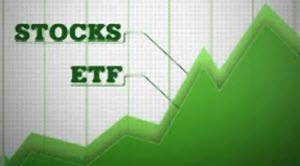Since the Covered Call ETF has a limited upside in times of quick gains for the overall market, it is advisable to create an investment portfolio where your investments in Covered Call ETFs is balanced by investments that will allow you to take financial advantage of periods when the overall market is going up at a quick pace.
 If you believe that the market will stay flat or semi-flat for the period you are planning your investment for, you should increase your investment in Covered Call ETFs in relation to investments in assets that only do well in non-flat markets. If, on the other hand, you sense that a non-flat market is on its way, you may wish to decrease your exposure to Covered Call ETFs and up your other investments to take better advantage of the coming non-flat situation.
If you believe that the market will stay flat or semi-flat for the period you are planning your investment for, you should increase your investment in Covered Call ETFs in relation to investments in assets that only do well in non-flat markets. If, on the other hand, you sense that a non-flat market is on its way, you may wish to decrease your exposure to Covered Call ETFs and up your other investments to take better advantage of the coming non-flat situation.
How much of your investment portfolio that should consist of Covered Call ETFs is impossible to recommend without taking your whole situation and personal preferences into account, including your willingness to spread risk even within the Covered Call ETF field by investing in many different Covered Call ETFs. For some investors, having even 15% of their portfolio in Covered Call ETFs would be way too much. For others, a portfolio where 40% or even more consists of Covered Call ETFs would be a great choice. It is all about taking the whole situation into account, rather than trying to pass of general one-size-fits-all type of advice about how to use Covered Call ETFs.
Covered call ETFs is primarely suited for passive investors. Active traders can make more money using other techniques regardless of the market conditions. You can read more about who should invest in EFTs here.
This article was last updated on: April 19, 2018
